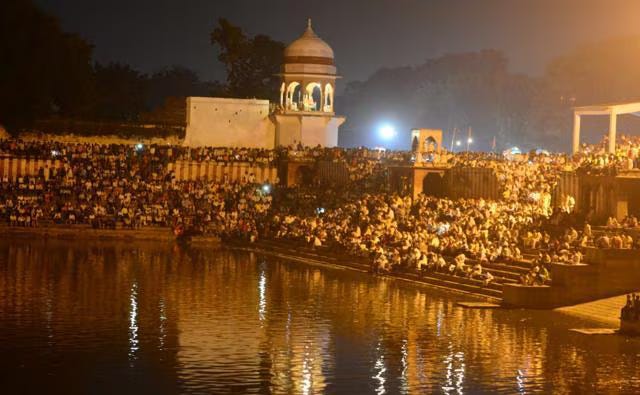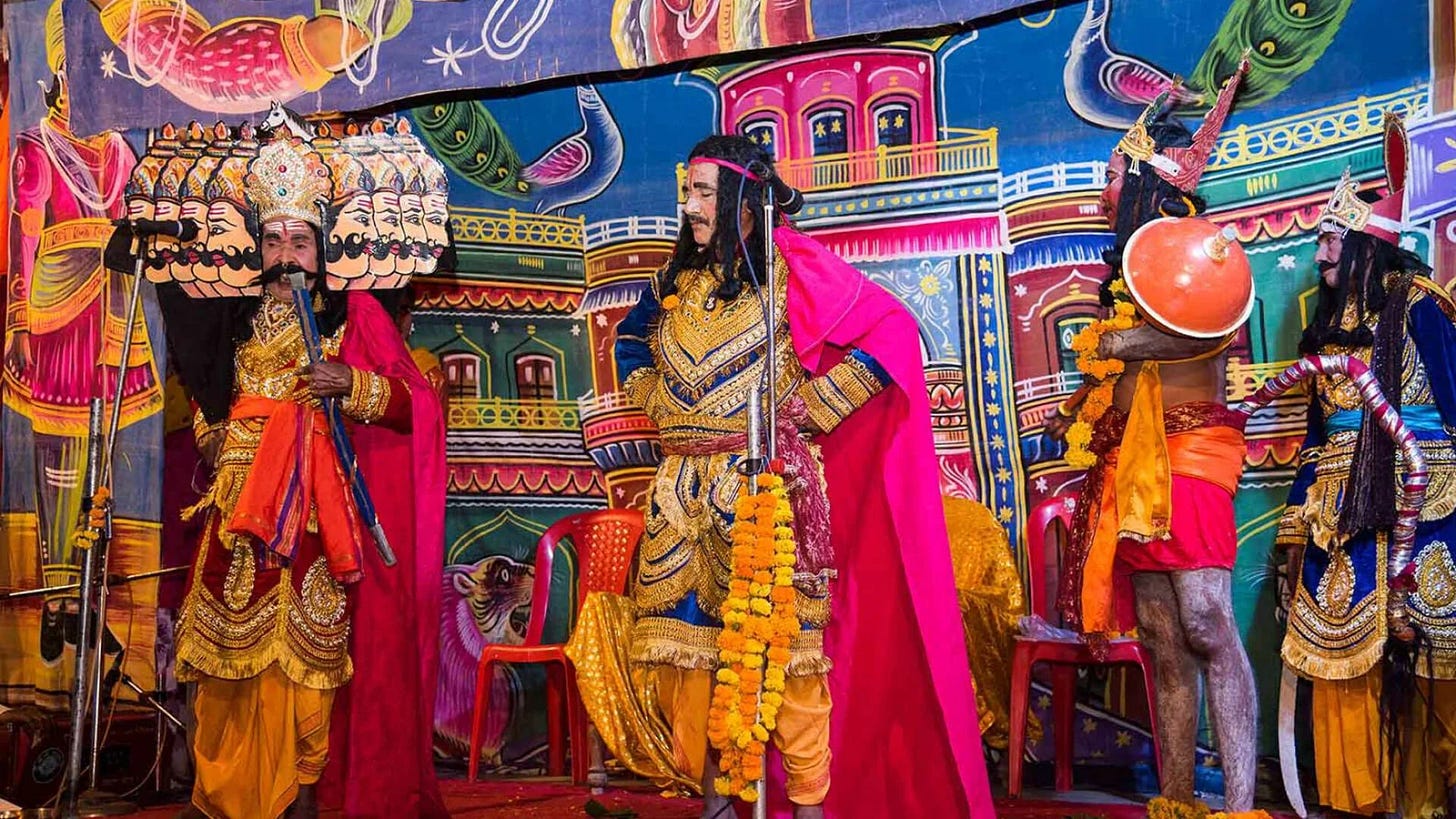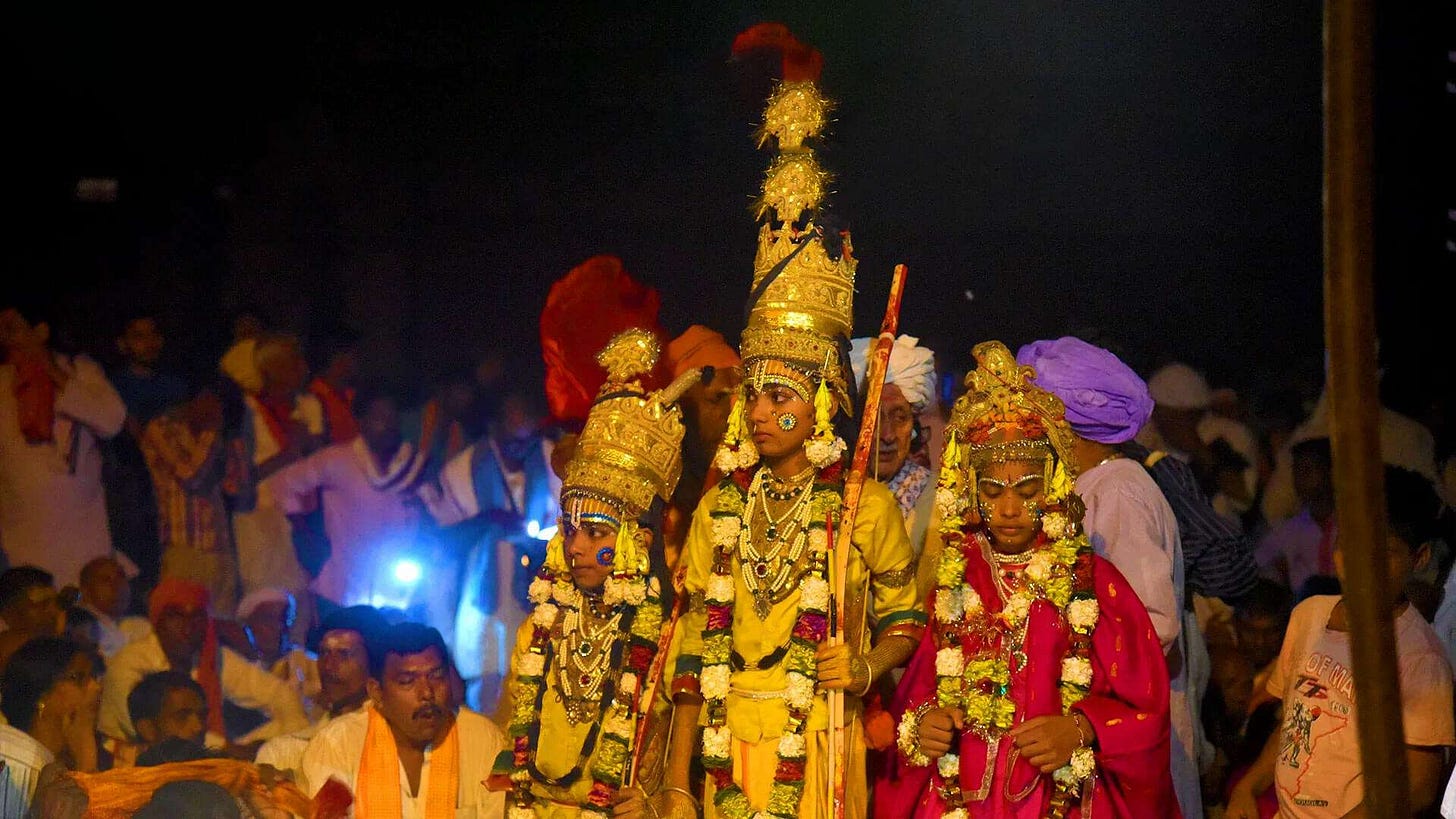Among the many cultural treasures of India, the Ramnagar Ramlila holds a special place. Every year, the ancient town of Ramnagar, located across the Ganges from Varanasi, comes alive with a dramatic reenactment of the Ramayana. Unlike the shorter 10-day Ramlilas seen in many parts of the country, the Ramnagar version is a 31-day epic performance, transforming the entire town into a grand, living stage. Recognized by UNESCO as part of the Intangible Cultural Heritage of Humanity, this festival is not just a play but a spiritual journey experienced by thousands of devotees and visitors.
History and Origins
The Ramnagar Ramlila traces its roots back to the early 19th century. It was initiated under the patronage of Maharaja Udit Narayan Singh, the ruler of Kashi (Banaras). Since then, successive kings of the royal family of Varanasi have maintained and supported the tradition. Over two centuries later, the Ramlila continues with the same devotion, making it one of the most enduring cultural legacies of India.
The uniqueness of the Ramnagar Ramlila lies in its scale and authenticity. The script primarily follows Tulsidas’s Ramcharitmanas, and every episode is performed in detail, spanning over a full month. Unlike modernized versions, the Ramnagar enactment preserves traditional methods - natural lighting, minimal artificial amplification, and devotional singing - keeping the experience as close as possible to its historical origins.
UNESCO Recognition
In 2008, UNESCO inscribed the Ramlila tradition, including the Ramnagar performance, on the Representative List of the Intangible Cultural Heritage of Humanity. This recognition highlights the importance of the festival not only as a religious event but also as a cultural phenomenon that preserves oral traditions, community participation, and India’s rich theatrical heritage. The inscription has brought global attention to Ramnagar, encouraging efforts to safeguard and promote this living art form.
The Experience – A Town Becomes a Stage
For the duration of the Ramlila, the entire town of Ramnagar transforms into Ayodhya, Lanka, and every other setting of the Ramayana. Different neighborhoods and open grounds become stages representing various locations like Chitrakoot, Panchvati, Ashok Vatika, and Lanka. Audiences often follow the performance by moving from one stage to another, immersing themselves in the journey of Lord Rama. The atmosphere is electric yet devotional, blending drama, music, storytelling, and ritual into a seamless spiritual experience.
2025 Schedule
The 2025 edition of Ramnagar Ramlila will unfold from mid-September to early October. It begins in the days of Navratri and continues beyond Dussehra, covering every episode of the Ramayana. Some highlights include:
16 September – Episodes like Gangavtaran, Chitrakoot Nivas, and the sorrow of King Dasharatha.
17 September onwards – Bharat’s meeting with Rama at Chitrakoot, forest episodes, and encounters with sages.
Late September – The unfolding of Aranya Kanda and Sundara Kanda, including Hanuman’s adventures in Lanka.
30 September – The great battle between Rama and Ravana.
2 October – Vijaya Dashami, marking the victory of good over evil with Ravana’s defeat.
5 October – Rama’s coronation (Rajyaabhishek) in Ayodhya.
6–7 October – Concluding rituals, farewell ceremonies, and public blessings.
This extended format allows devotees to witness not only the climactic battles but also the subtler philosophical and emotional episodes often overlooked in shorter performances.
Tickets and Entry
One of the most remarkable aspects of Ramnagar Ramlila is its public accessibility. Entry is free for the general audience, as the festival is meant to be a community celebration. However, certain travel operators offer special viewing arrangements, reserved seating, and guided tours for those who prefer organized experiences. The adjoining Ramnagar Fort and museum, which serve as important backdrops to the event, have a nominal entry fee, but the Ramlila itself remains open to all.
How to Reach
Ramnagar is well-connected and easy to reach from Varanasi:
By Air: The nearest airport is Lal Bahadur Shastri International Airport in Varanasi, about 30–40 km away.
By Train: Varanasi Junction is the main railhead, with connections to major cities. From the station, taxis and auto-rickshaws can be hired to reach Ramnagar.
By Road: Ramnagar lies across the Ganges from Varanasi city and is accessible by bridge, ferry, or direct road routes. Local transport and private cabs are readily available.
Once in Ramnagar, landmarks like the Ramnagar Fort act as central reference points, from where the various performance venues can be explored.
Significance
The Ramnagar Ramlila is more than just theatre. It is a collective act of devotion, culture, and memory, binding the community across generations. For locals, it is an annual reaffirmation of faith, while for visitors, it offers a rare window into India’s living traditions. The UNESCO recognition only affirms what devotees have always known - that this is not just a performance but a heritage of humanity itself.
Experiencing the Ramnagar Ramlila is like stepping into the pages of the Ramayana. With its 200-year history, detailed performances, sacred atmosphere, and recognition on the world stage, it stands as a shining example of India’s intangible cultural wealth. In 2025, as the town once again becomes the stage for Lord Rama’s epic journey, visitors from around the world will gather in devotion, awe, and celebration of one of the greatest stories ever told.




